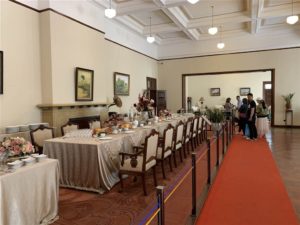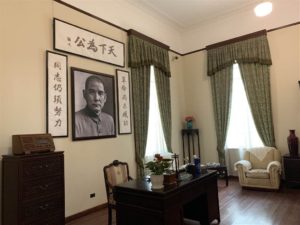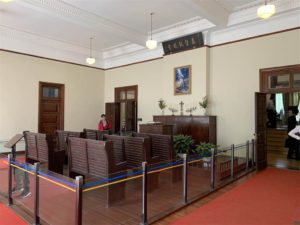Briefly, Nanjing – The Trees of Love
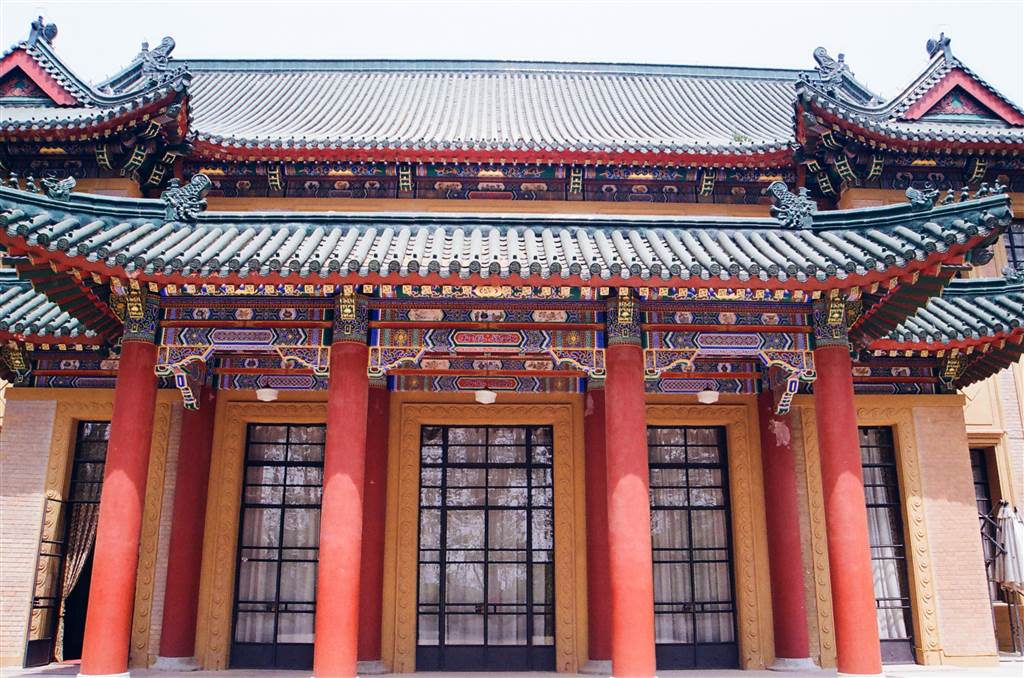
Once described as the First Villa of the Far East, the Former Residence of the Chairman of the Republican Government provides an intimate glimpse into the lives of Chiang Kai-shek and his wife Soong Meiling. Nanjing called it fondly as the Soong Meiling Villa, as Chiang Kai-shek’s expression of love for his third wife.
The pleasing sight of a stately black Buick greeted visitors at the door. This was the original car that served the then Chinese president Chiang Kai-shek of the Nationalist Government. The villa stood gracefully, its Chinese glazed tile roof presenting the first impression of an oriental architecture. Yet the French windows that lined the upper floors added a nice Western touch. Perhaps it was just enough to convey the spirit of the times in which the villa was built. In 1931, China was at the crossroads. A new era adopting ideas of western democracy has yet to take root in Chinese soil.

Once inside the villa, however, visitors would see an unmistakable preference for western-styled interior. Most of the rooms in the Villa were open for exhibition. From the kitchen in the basement to the chapel and the office on the upper floors, one could observe a thoughtful effort to convey, if not preserve, the lifestyle of simple elegance in the modern era.
Certainly, these rooms spoke amply to the life of the First Lady. I learned an interesting fact in the bathroom. Soong Meiling used to take milk bath, but not due to a penchant for queen-like, luxurious living. She suffered from a skin ailment and milk baths would alleviate the discomfort.
In the main hall visitors would come upon a standard exhibition on Soong Meiling’s life. I thought the descriptions were fair. In some of the previous exhibitions I saw on this trip, I sensed a general distaste toward Chiang Kai-shek. Soong Meiling, however, seemed to be well-respected and admired in China, her work as the first lady was recognized and lauded.
The stairs leading to the basement showed visitors a small but significant collection of Soong Meiling’s paintings. While Soong has been known in the world for her gifts in language, history, politics and diplomacy, her love for painting was not as well known. As her paintings showed, she was an accomplished painter especially in water color.
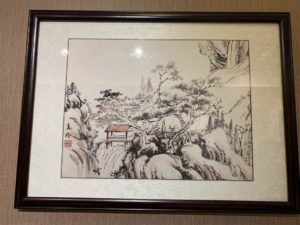
Finally, as to the expression of love in building this villa, Chiang Kai-shek planted rows and rows of Chinese parasols surrounding the villa. At blooming season, the trees with their flowers would form a beautiful shape of a necklace. The villa showed itself within a tear-drop pendant. Pictures taken aerially showed this exceptional view of the full bloom, as if each year the flowers would speak the message of love once again as an eternal testimony.
Alright, I was a bit carried away here. The idea of Chiang Kai-shek being romantic does not quite fit his profile as a military ruler.
The Soong Meiling Villa, however, shall forever stand witness to the short-lived Republican period in Chinese history.

